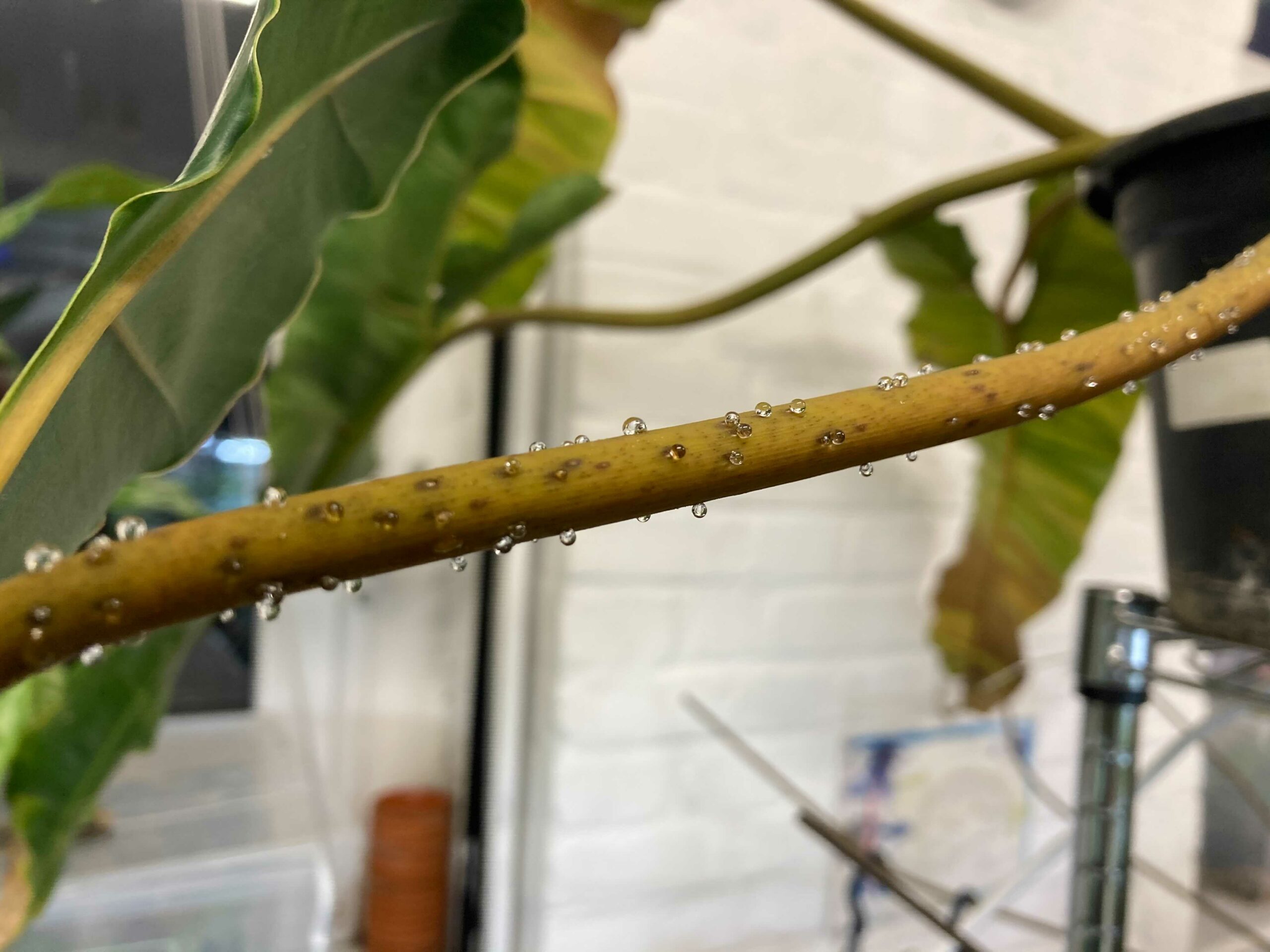


The phenomenon we are talking about is often mistaken for insect damage or even a disease on the plant. However, it is not damage, but extrafloral nectaries. These openings, also known as honey glands, secrete nectar, a sugar-rich liquid produced by the plant to get rid of waste. It also helps to form a symbiotic relationship with ants, ladybugs and other beneficial insects in the wild.
They are extrafloral, so they are not located in the flower as usual and have something to do with the fertilization process of the plant, but are usually found on stems, leaves and on the outside of the flower bud. Extrafloral nectaries occur in a variety of sizes in the plant species studied, but rarely have a diameter of more than 1 mm. Although they are so small, they can be easily recognized by their red, purple, yellow, dark green or black coloured borders. They only occur in Philodendron, Alocasia and Culcasia from the Araceae family.
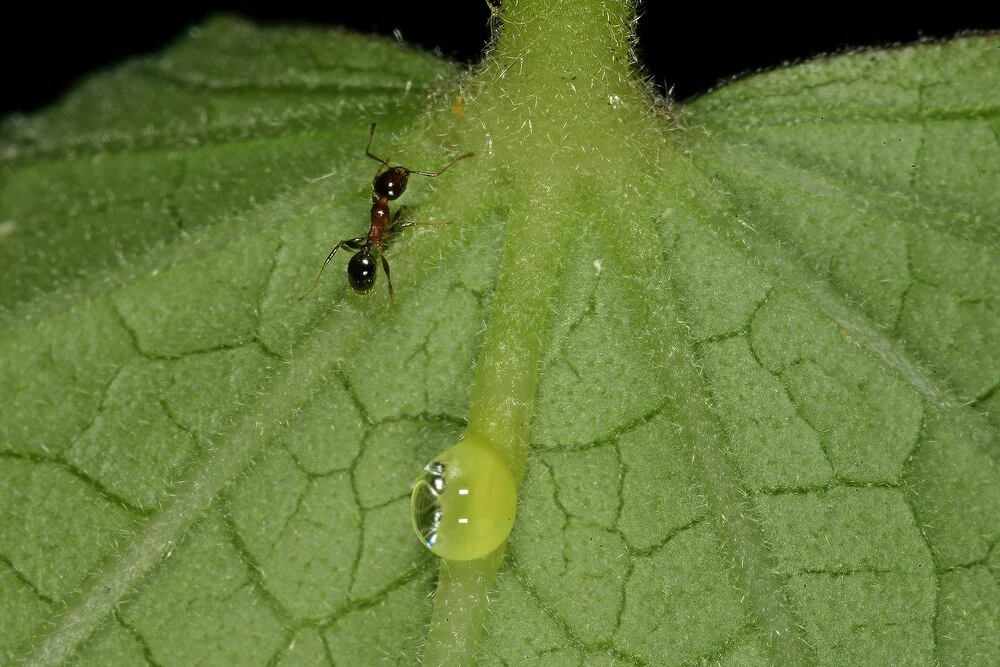
Outdoors, ants build nests between the roots of the plant, which give the nest stability. The philodendron plant in turn receives nutrients from the nest, and the ants ensure that the plant is protected from other insects such as caterpillars that would otherwise eat the plant. The philodendron rewards the ants and other beneficial insects for their plant protection with sugar-rich nectar. Great teamwork, isn’t it?
In some cases, excessive production of nectar can be observed, which can cover the surface of the plant with it. Nectar droplets can leave a yellow stain or a sticky haze on the leaf that does not look attractive. However, this is harmless and should not be confused with pests.

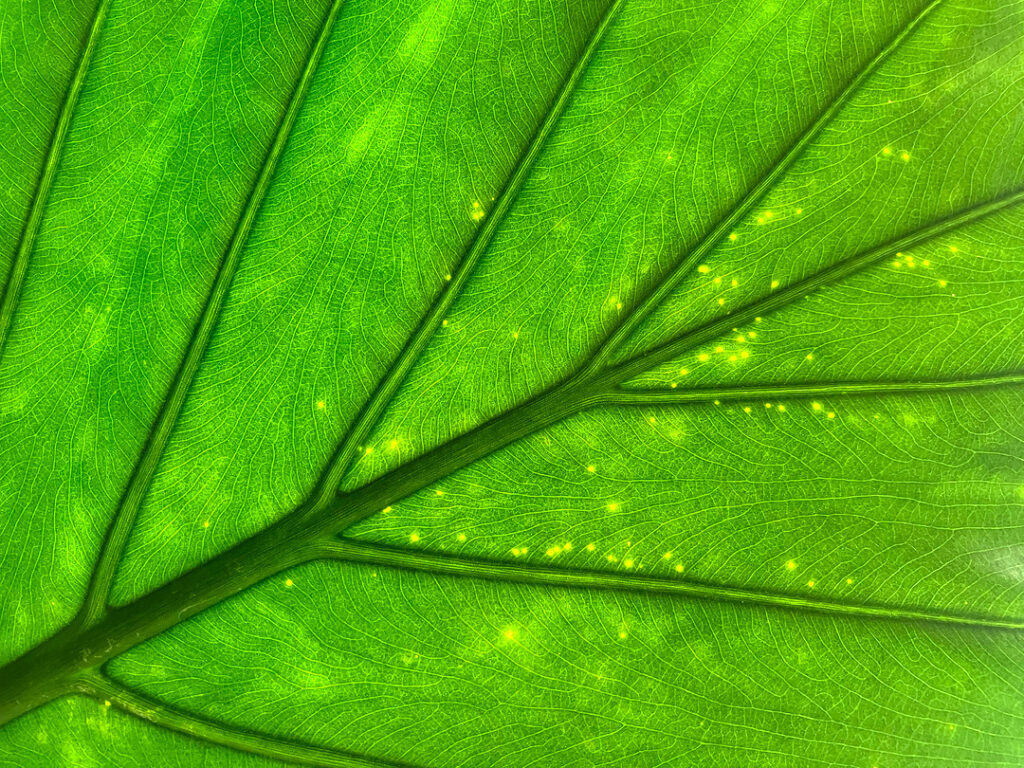
Fun fact: The drops actually have a sweet taste and are edible in some plants. But please check if your plant is one of them before you try it!
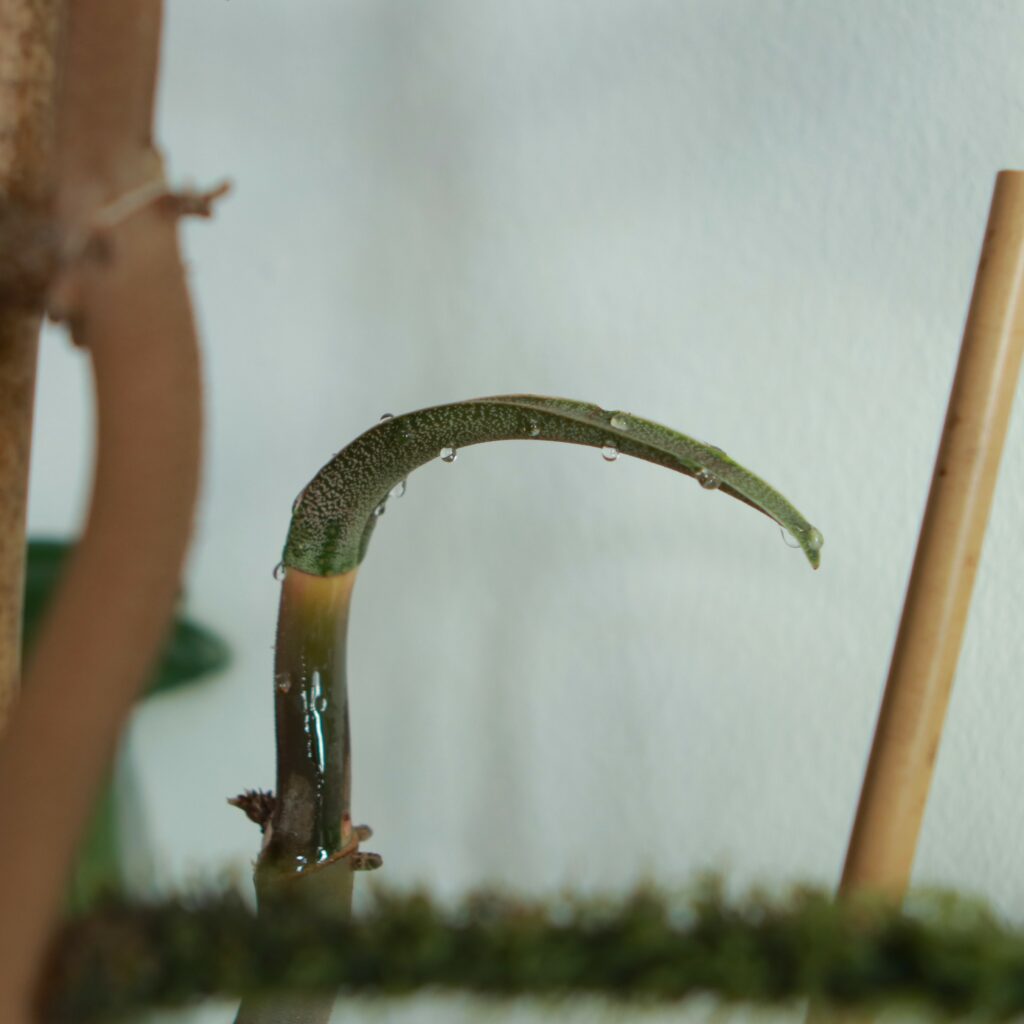
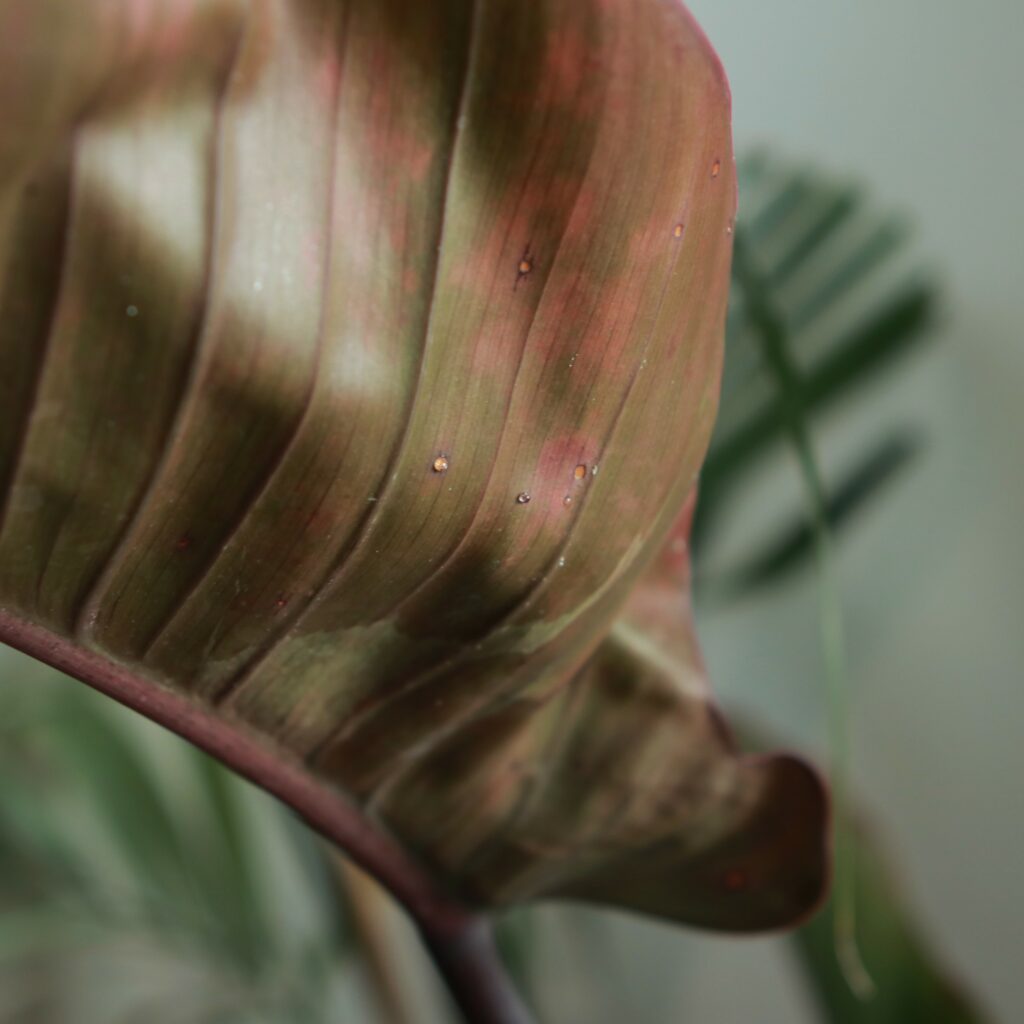

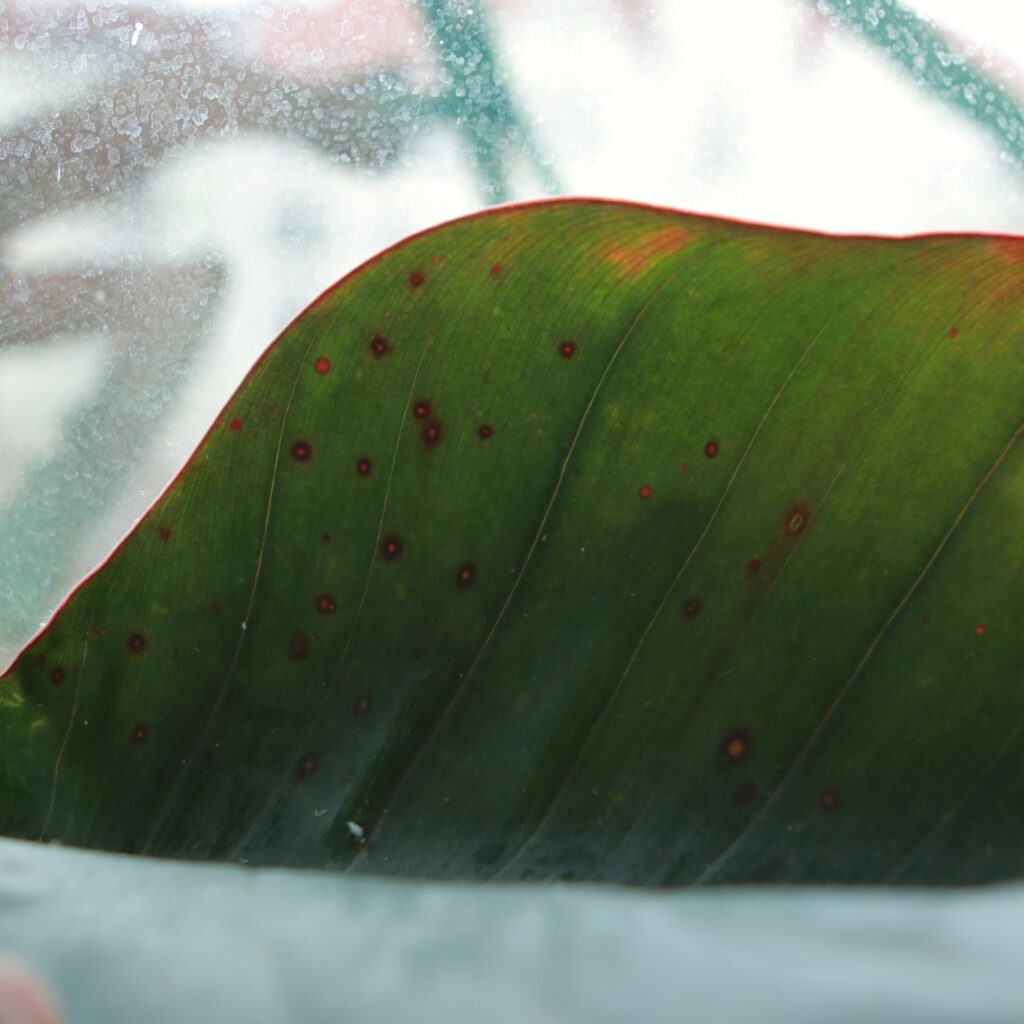
This cool skill can also help your plant to keep pests away at home, whether on the balcony or indoors. Do you want to give your plant some extra support with pest control? Here you can learn more about sticky traps and how to make them yourself.
